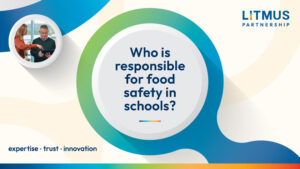In boarding schools, cleaning is not just about hygiene – it plays a crucial role in student wellbeing and pastoral care. Despite its importance, cleaning operations in many boarding schools have evolved over time, often without a systematic assessment of whether labour levels are optimally sized or resources are being fully utilised.
At Litmus, we have collaborated with a wide range of boarding schools to conduct what we call a ‘best value review’ of their cleaning provision. In many cases, this reveals a lack of clarity around the true cost of cleaning, particularly in boarding houses where the line between cleaning and pastoral support can often be blurred.
Mapping your current labour model
This is where structure and benchmarking become essential. The British Institute of Cleaning Science (BICSc) provides a robust methodology for assessing cleaning needs, with specific guidance for boarding environments. Mapping the current labour model against actual requirements can help pinpoint areas of over or under resourcing and offer a clearer picture of how cleaning is managed across a school.
For instance, even if your school has the correct overall amount of cleaning staff, they may not be deployed effectively. By redistributing labour in line with the mapping results, you can achieve a more balanced and consistent service. In some cases, we have identified substantial potential savings, or recommended using excess hours to build a more resilient staffing model, with floating cleaners available to cover absences or peak periods.
Importantly, this review offers schools a stick in the sand – a clear benchmark of what can be achieved in terms of productivity, cost-efficiency, and service quality. For some, the result may be a decision to not replace staff when they leave, while for others, it could highlight an opportunity to professionalise the service further – whether by improving in-house management or by partnering with an experienced contractor.
Which cleaning model is right for your school?
In-house cleaning
Pros
- In-house cleaners often become an integral part of the school’s culture. They’re a consistent, familiar presence for students, often going above and beyond their cleaning duties to contribute to the school’s pastoral care. Many cleaners develop meaningful relationships with students by checking in on their wellbeing, offering emotional support, and even assisting with non-cleaning tasks such as helping students with laundry or making beds.
- With in-house cleaners, schools have full control over the quality, frequency, and style of cleaning. This level of direct management ensures that the cleaning team is aligned with the school’s ethos, procedures, and specific needs, without external constraints.
Cons
- In-house cleaners often perform a wide range of duties that extend beyond cleaning. While this can be valuable for students, it also makes it difficult for schools to track how much time is actually spent on cleaning tasks versus other duties, such as wellbeing support or administrative tasks.
- Managing an in-house team can place significant strain on school leadership, particularly when dealing with staffing issues such as sickness, turnover, and vacations. With limited budgets and competing priorities, ensuring consistency and quality in cleaning can sometimes become a logistical challenge.
Outsourced cleaning
Pros
- Partnering with an experienced contractor helps to professionalise the cleaning service. Cleaning companies typically have well-established protocols, access to industry-leading equipment, and highly trained staff, ensuring that cleaning standards are consistently high across all areas of the school.
- Outsourcing can often help schools reduce overhead costs. Cleaning providers have established processes that can drive efficiencies, such as bulk purchasing of supplies, optimised scheduling, and specialised staff training. Now that VAT can be reclaimed by independent schools, this barrier to outsourcing has been removed and any efficiencies in the cost base are net savings to the school.
- Outsourced contractors are generally better equipped to scale the cleaning operation up or down based on the school’s needs. Whether the school is undergoing a peak period, like exams or a major event, or experiencing a drop in student numbers, outsourced cleaning teams can adapt quickly to changes in demand.
Cons
- While contractors offer professional standards, they may lack the personal connection that in-house cleaners develop with students. In many boarding environments, the relationship between students and cleaners is a vital part of pastoral care. Maintaining the balance between pure cleaning, the contractor’s area of expertise, and pastoral duties takes understanding and careful consideration.
- With an external provider, there may be a disconnect between the school’s specific needs and the contractor’s execution of services. Communication is key, and without clear, ongoing dialogue, schools risk issues such as missed cleaning schedules or poor performance due to misunderstandings or differing expectations.
Hybrid cleaning model
Pros
- A hybrid model combines the benefits of both in-house and outsourced cleaning. Schools can retain the vital personal connections and pastoral care provided by in-house boarding house cleaners while outsourcing certain aspects, such as cleaning the academic buildings, specialist facilities, or providing technical expertise.
- By keeping cleaners for the boarding houses on the school payroll, you maintain a familiar presence that students rely on. At the same time, outsourcing more specialised services allows you to tap into professional cleaning standards, consistency, and scalability, which can ultimately save time and improve efficiency.
- The hybrid model provides flexibility to adapt to changes. For example, the school could choose to scale up or down the outsourced cleaning component based on seasonal needs or budget availability, while keeping core staff to maintain the pastoral aspects of care.
Cons
- Managing a hybrid model requires careful coordination between in-house staff and outsourced contractors. There’s a need for effective communication and clear operational boundaries to ensure both teams are working towards the same goal and that no cleaning duties fall through the cracks.
- Depending on the scale of the outsourced services, the hybrid model could come with additional management costs. Schools must carefully assess whether the benefits of outsourcing certain tasks outweigh the cost of managing both in-house and external teams.
Get in touch
Cleaning in boarding schools is complex, but with the right insight and support, it can be more efficient, resilient, and above all, better for the students who call the school home.
For further information on our best value reviews and to help you find out what matters most to your community, email joeparfitt@litmuspartnership.co.uk
The Litmus team











